This post has been moved to OpenChutes.com. All future postings of Powwows, Indian Relay Races, Rodeos and Rendezvous will be posted there from now on exclusively. So if you’re looking for new images and posts for all those events attended this year, plus all the old posts posted on BigShotsNow.com check out OpenChutes.com. See you there!
2016 NCIPA Northern Colorado Intertribal Powwow
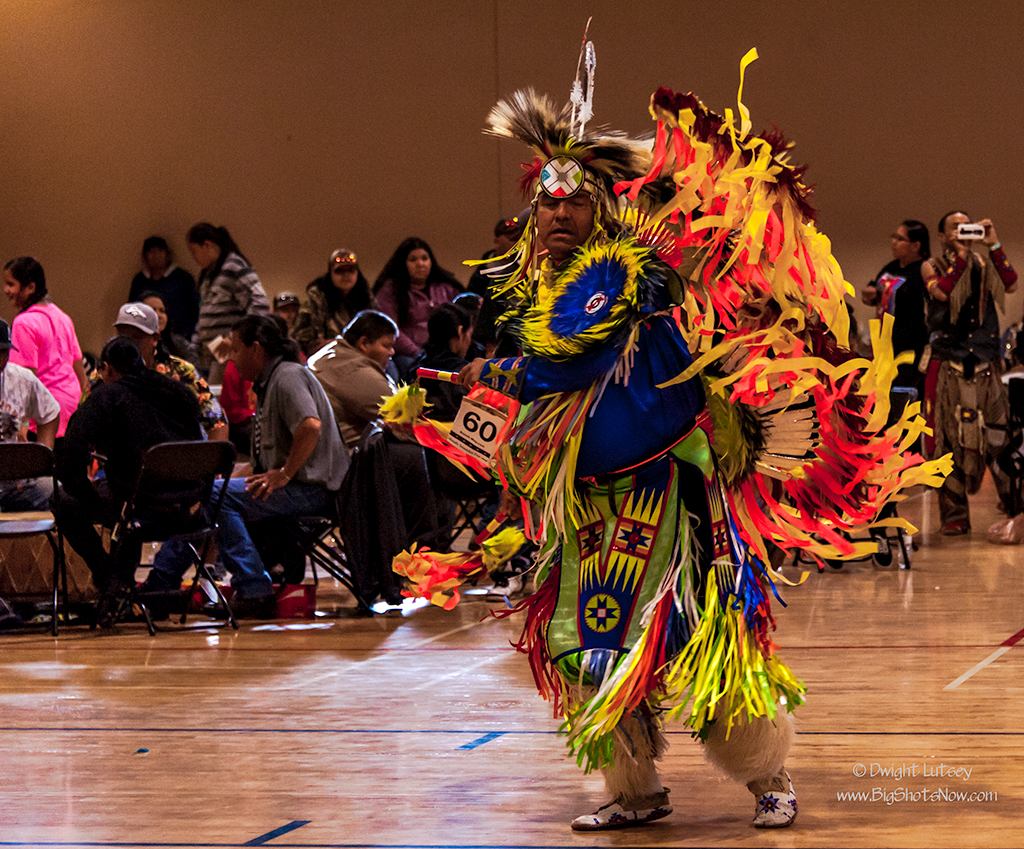
On April 16th and 17th this year the 24th annual Northern Colorado Intertribal Powwow was held in Ft. Collins, Colorado. The weather was cold and rainy but inside the Northside Aztlan Community Center it was as warm as the smiles of the various attendees. Participants from all over were here to dance, drum, sing and celebrate their culture.
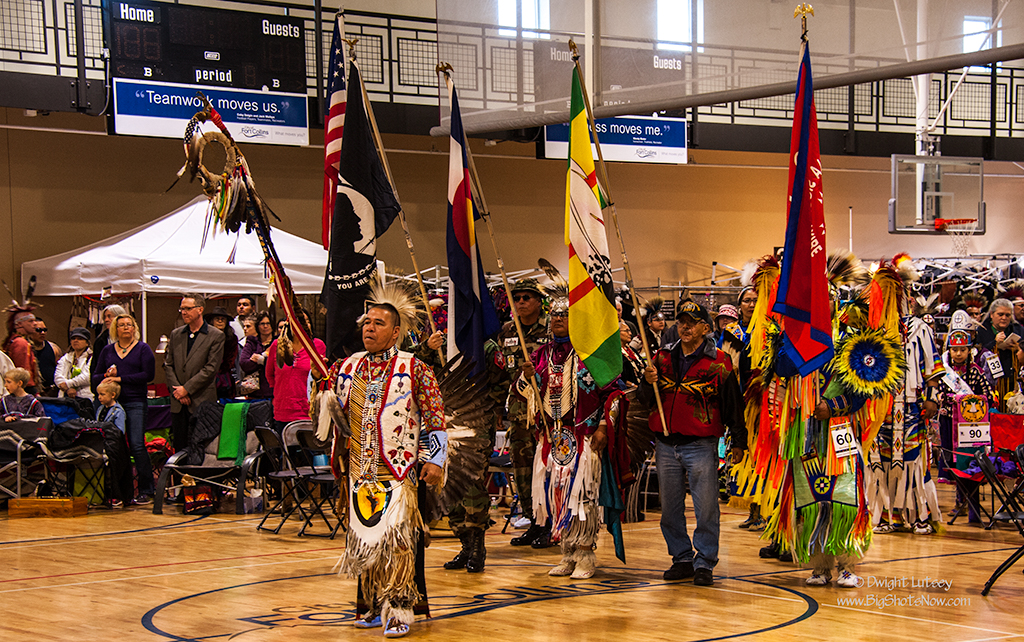
As always the color guard opened the ceremonies with all the flags displayed. It is an honor to be chosen to be a member of the color guard and the veterans who participate have all served their country in different branches of the armed services.

There are dances by the men.
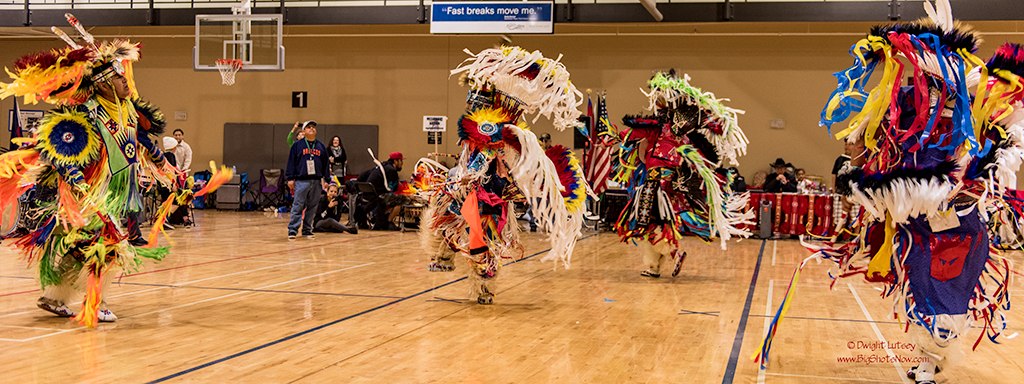
Fancy dancers with their fantastic regalia perform in a hypnotizing swirl of color and motion.
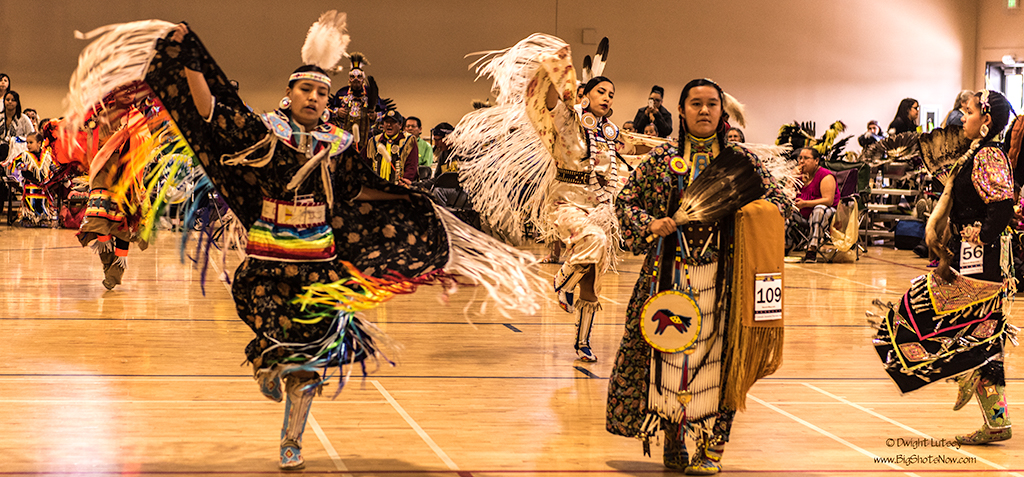
Women dancers have their own dances and their regalia and performance is spectacular.
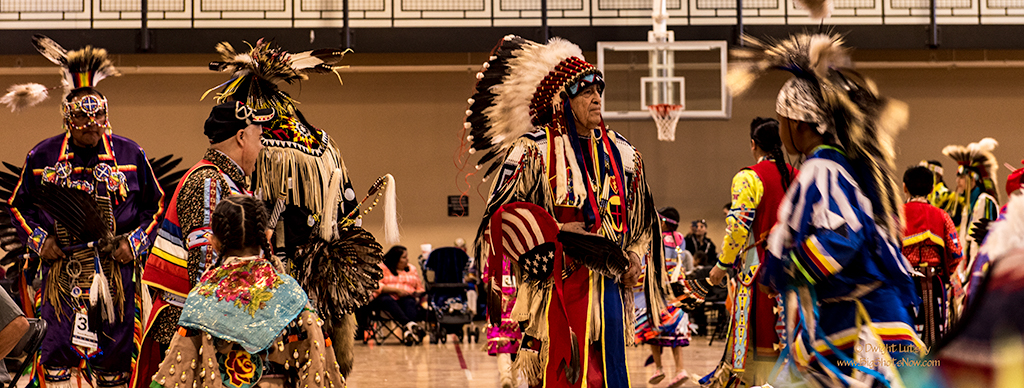
There is every type of regalia from the most highly decorated to very simple traditional and it is all on display.
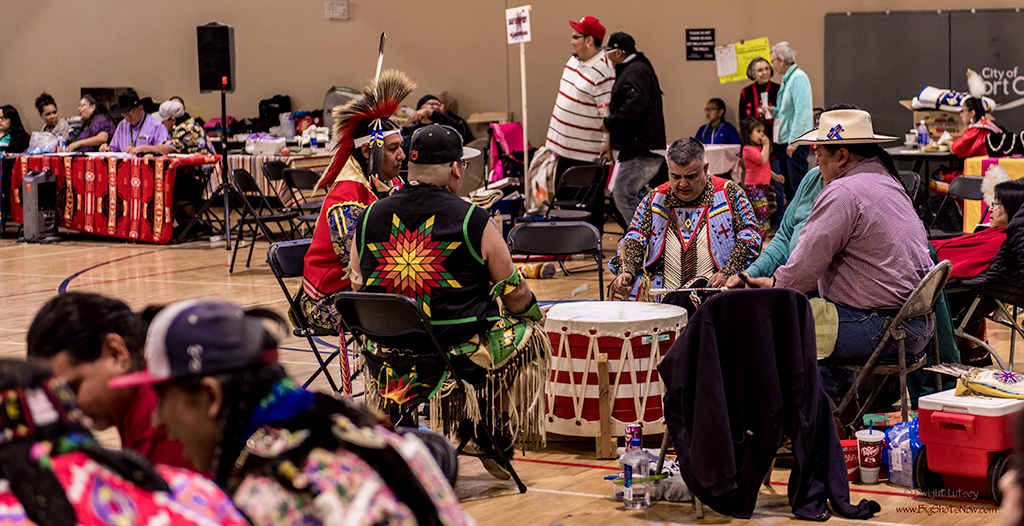
The powwow couldn’t be held without the drummers who play and sing the traditional songs for the different dances.
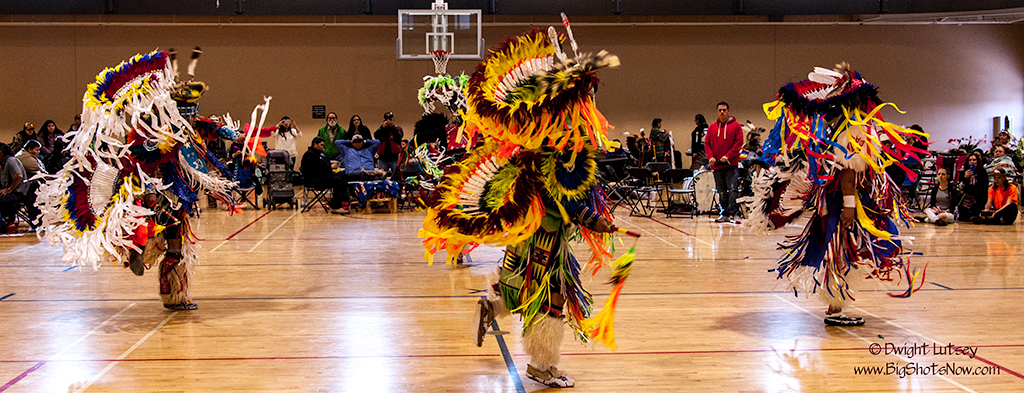
Fancy dancers are show stoppers with their incredible regalia and whirling, leaping, contestants. .
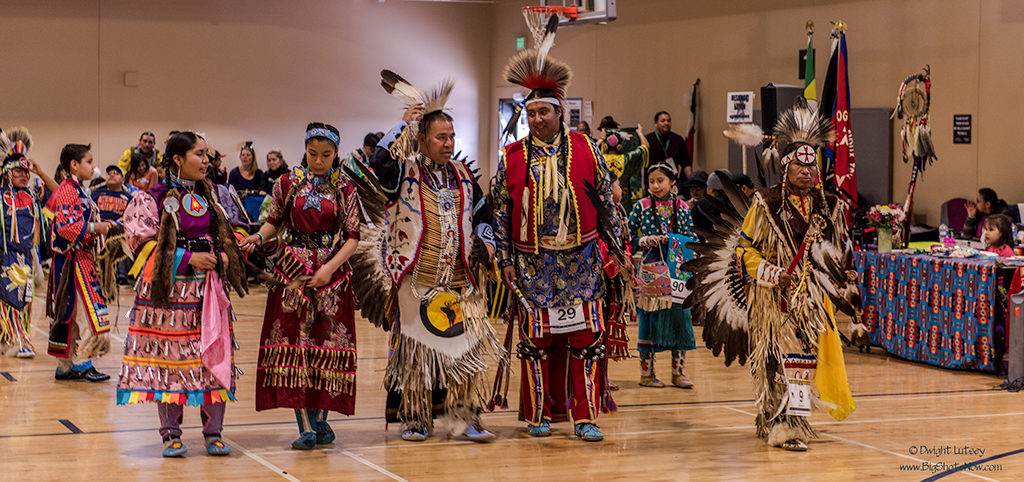
There are times when the members take a celebratory turn around the circle and everyone joins in.
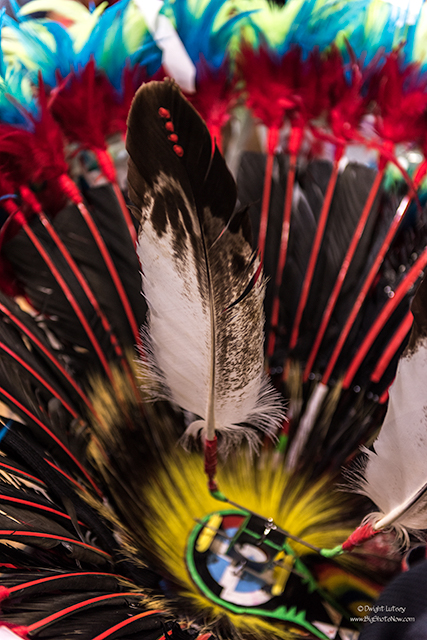
Always there is color. The various accessories combine colors in ways that are fascinating.
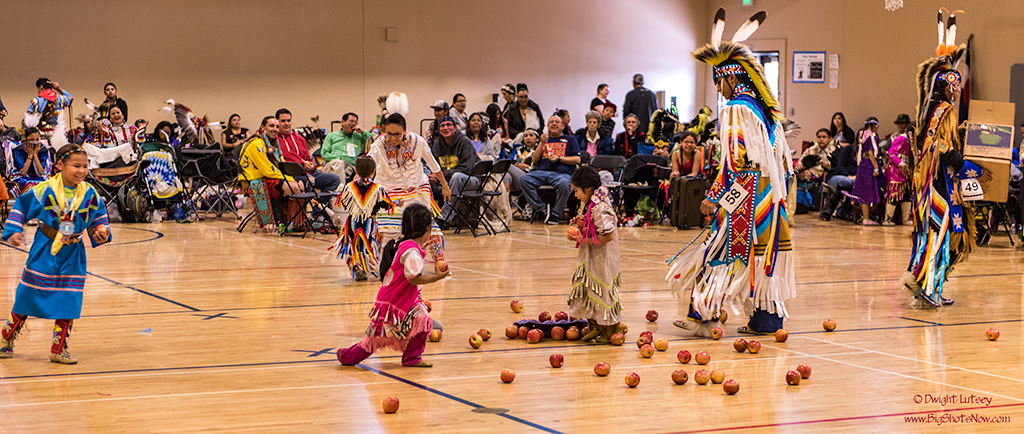
And always there are gifts. Here apples have been placed where the youngest of the participants can race out to gather them. Lots of fun for them and lots of fun for those who watch from the sidelines.
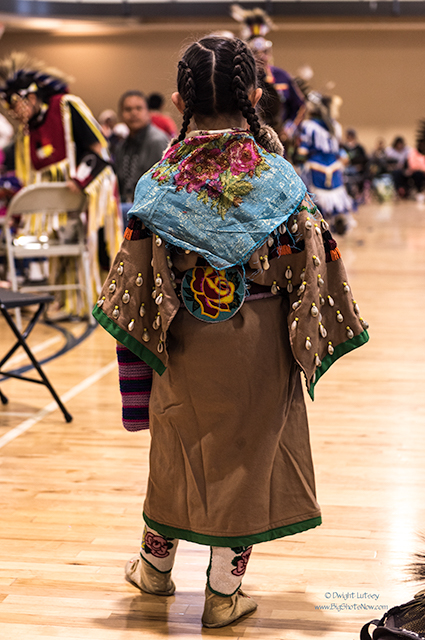
The youngest are also watching. Much can be learned by simply observing. This is how knowledge is passed down from generation to generation. By seeing, hearing, participating, talking to their elders, listening to their stories and always with receiving much love and attention.
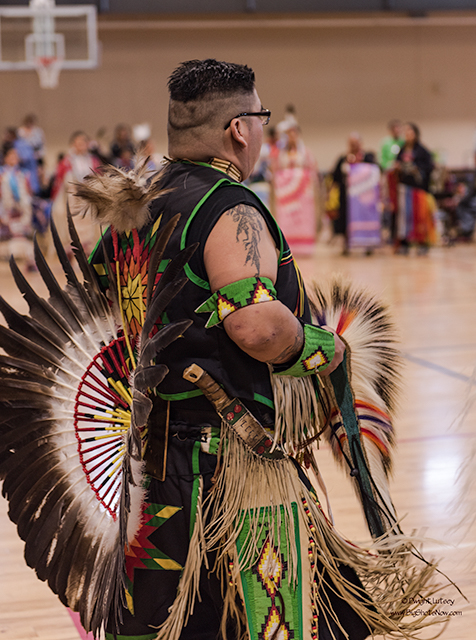
There are also big observers. But they learn too.
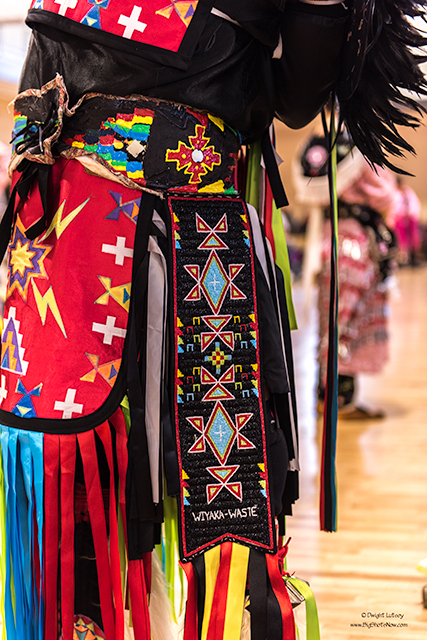
The bead and quill work on the various pieces is incredible. This is all hand done and the numbers of hours and effort that goes into them is beyond counting.
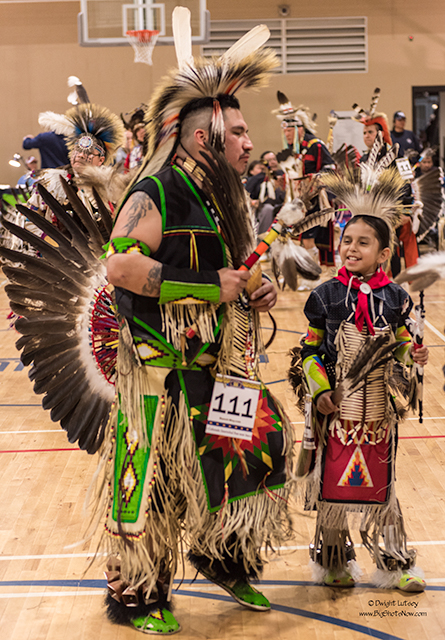
Sharing the experience makes lasting memories for both young and old.
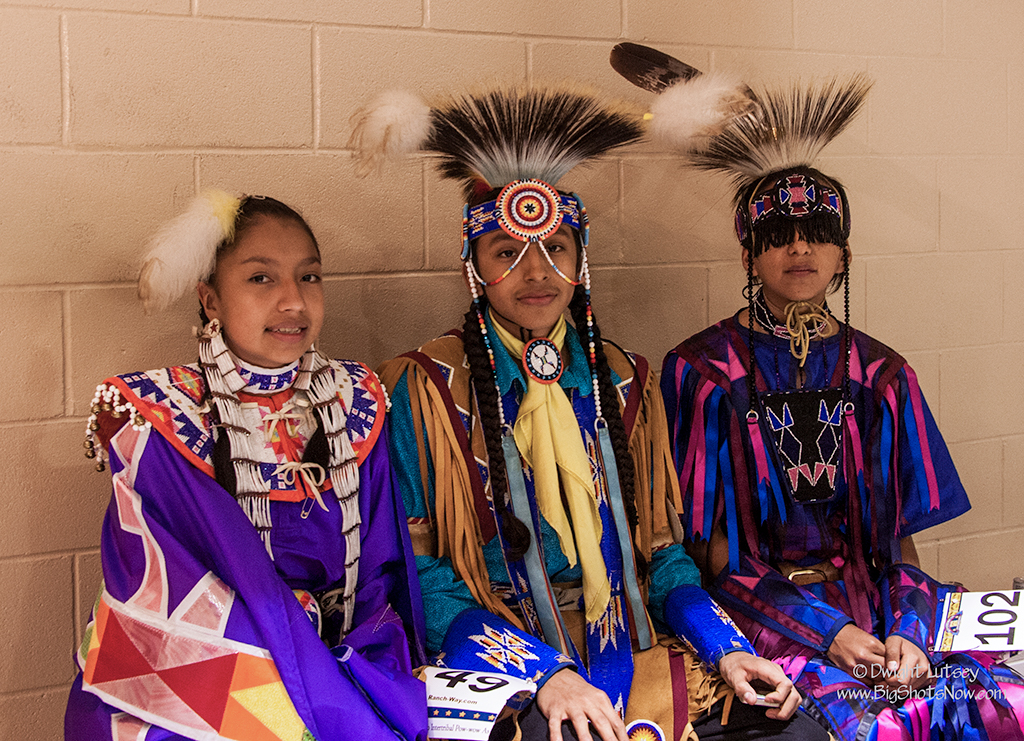
Youngsters waiting for their time to dance. These are great kids and they truly seem to be enjoying their part in all the proceedings. There is a lot of pride here.
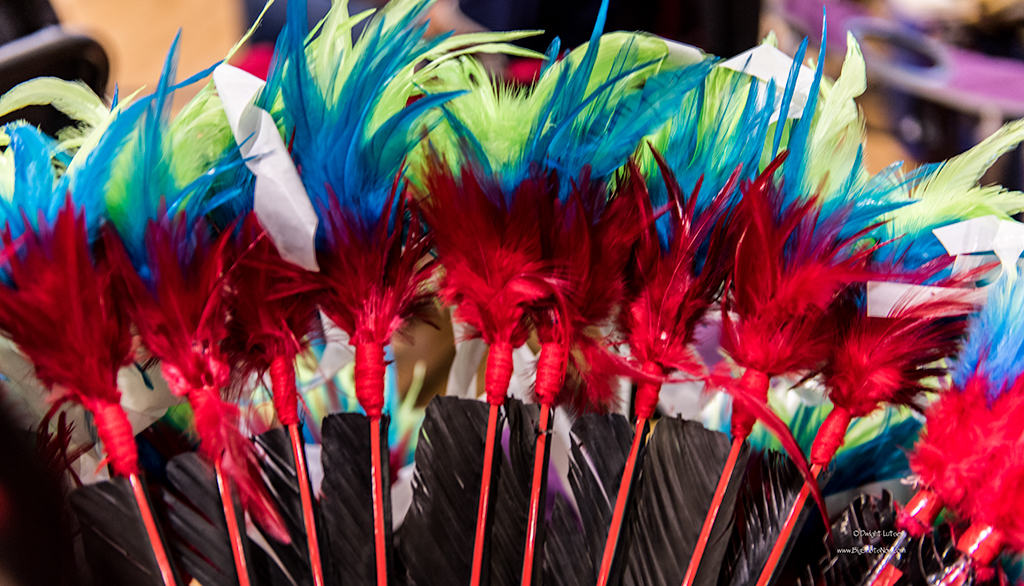
More color and detail shows how some of the regalia is constructed.
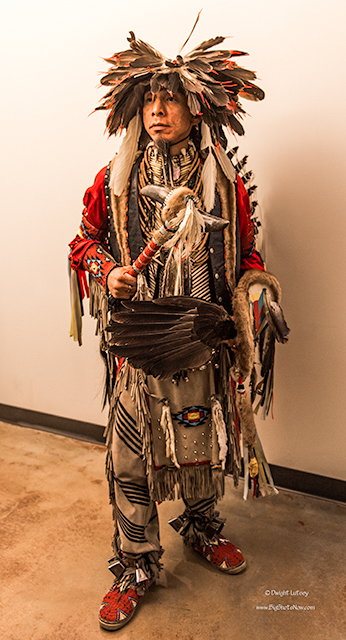
Many of the participants look as if they stepped out of an Edward Curtis photograph or perhaps a George Catlin painting.
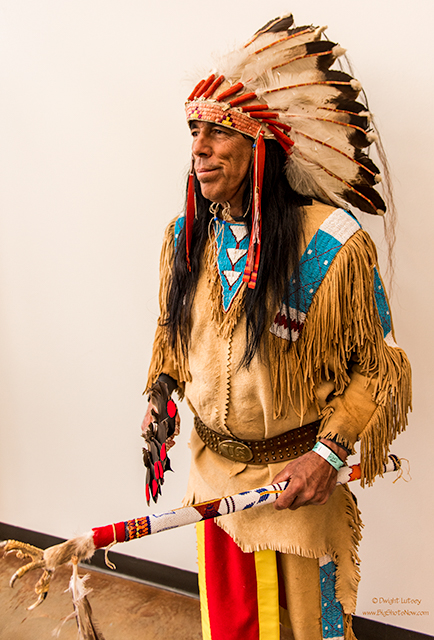
Styles of dress varied. There were as many different looks as there was participants.
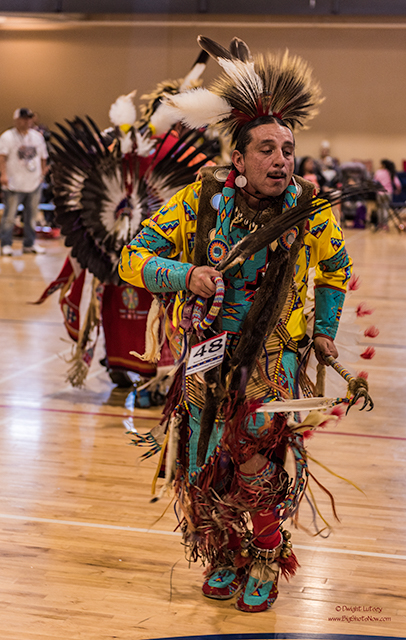
Dancing gives life to the clothing, the accessories carried, and to the participants themselves.
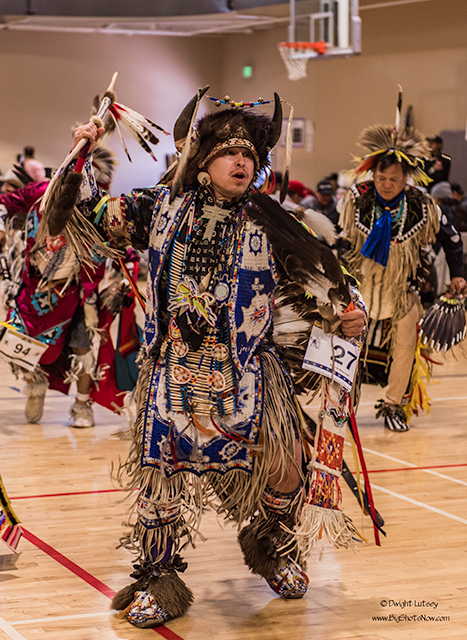
The surroundings of the dance began to fade away as you listened to the drums and watched the dances performed. The fact that you were in a gymnasium was lost as you watched dances that could have been performed a hundred years ago.
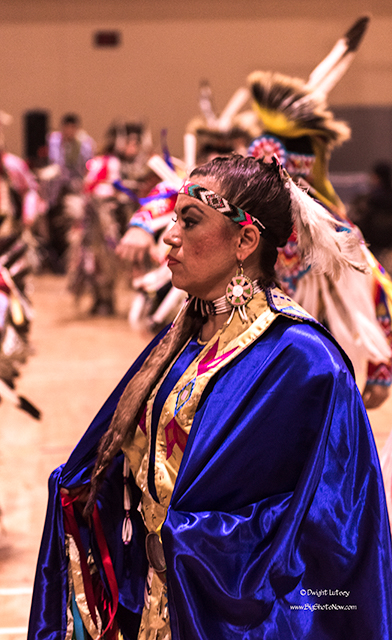
There was fun and excitement all around but underneath the activity it was always a serious spiritual event. This was not play, this was an expression of the participants culture and beliefs and was always a time of reflection.
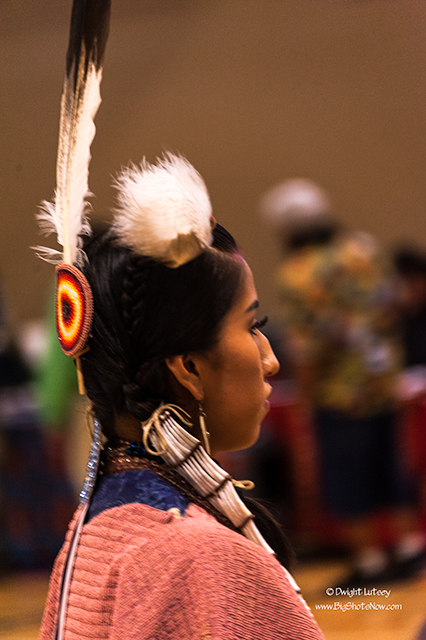
This young woman seemed to epitomize the effect these gatherings have on the people who attend them. Pride, attentiveness, beauty, strength of character, awareness of their culture, all folded into this gathering. Feeling the tradition that extends as far back into time as you can see, to right now in the chaos of the present, is reflected in her gaze.
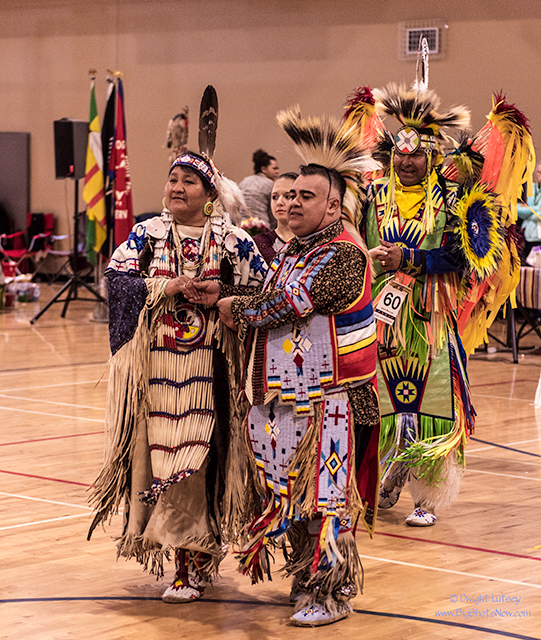
Nearly at the close of the event there was a couples dance. From the married couples down to the teenagers who have been flirting on the sidelines throughout the powwow, they parade around the ever-present circle that determines all they do in life. It shows how this is one large family. A family the reaffirms its bond to the tribe and their culture and to the world at large. That’s what a powwow is about.
In the future I will periodically post more images from this powwow so stay tuned for more. If you type, Crow, Blackfeet, Indian or the name of a gathering you will be able to visit pages from other powwows that have been posted here. There are literally hundreds of images from the many powwows, gatherings and Indian rodeos I have attended. Feel free to browse to your heart’s content. And if you feel so inclined forward this post to interested friends. Thanks

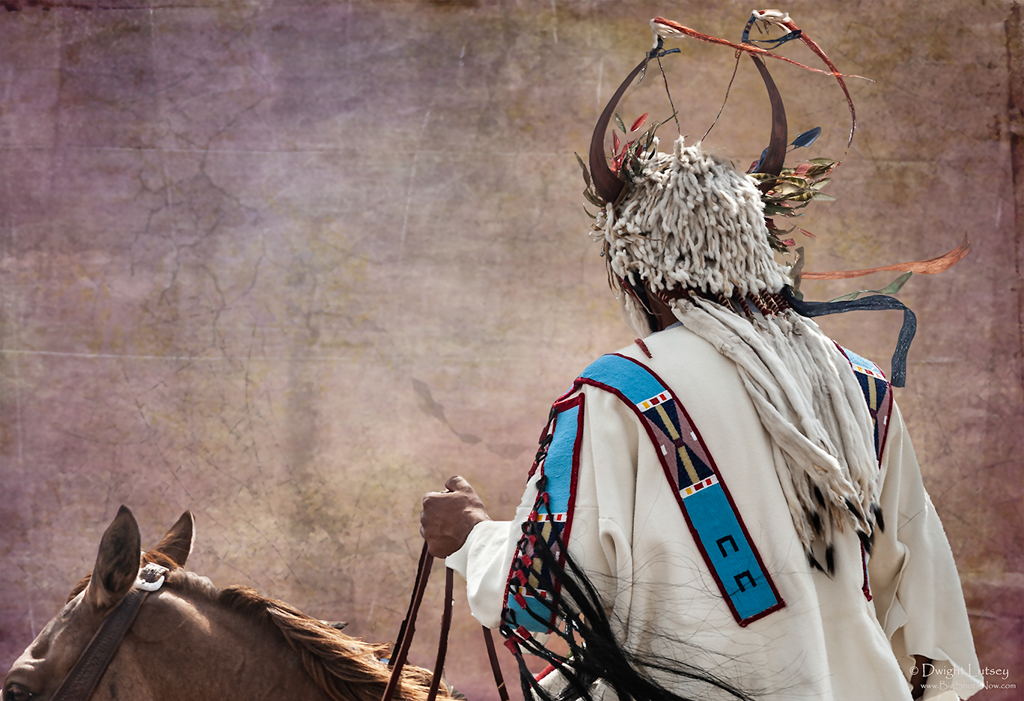
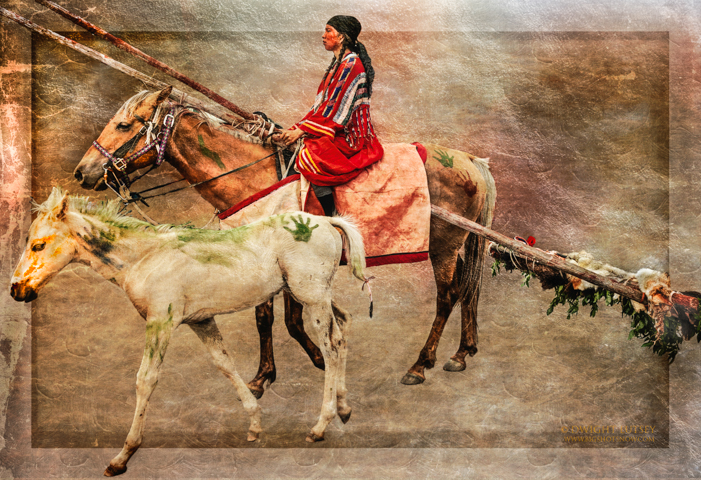
























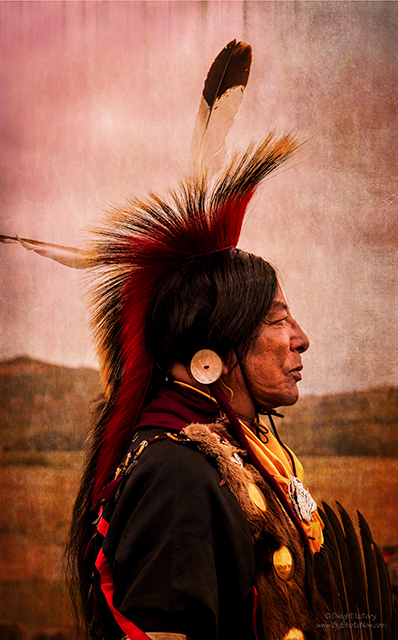
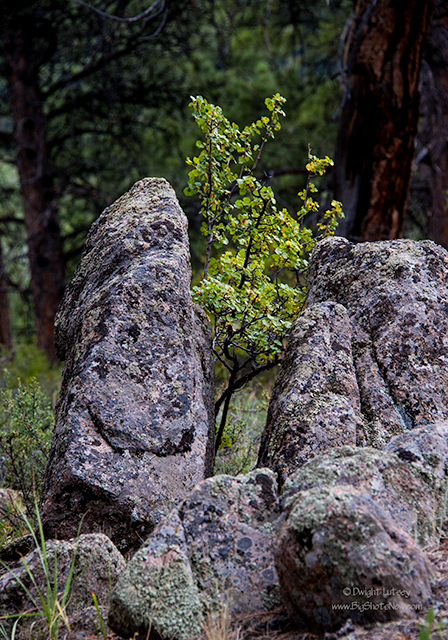
You must be logged in to post a comment.